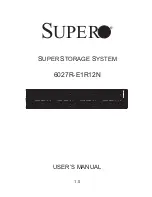
Rev. 1.10
76
November 26, 2019
Rev. 1.10
77
November 26, 2019
HT68FB240
USB Low Speed Flash MCU
Serial Interface Module – SIM
This device contains a Serial Interface Module, which includes both the four line SPI interface and
the two line I
2
C interface types, to allow an easy method of communication with external peripheral
hardware. Having relatively simple communication protocols, these serial interface types allow the
microcontroller to interface to external SPI or I
2
C based hardware such as sensors, Flash memory,
etc. The SIM interface pins are pin-shared with other I/O pins therefore the SIM interface function
must first be selected using a configuration option. As both interface types share the same pins and
registers, the choice of whether the SPI or I
2
C type is used is made using the SIM operating mode
control bits, named SIM2~SIM0, in the SIMC0 register. These pull-high resistors of the SIM pin-
shared I/O are selected using pull-high control registers, and also if the SIM function is enabled.
There is one control register associated with the serial interface control, namely SBSC. This is used
to enable the SIM
WCOL function and I
2
C debounce selection.
SPI Interface
The SPI interface is often used to communicate with external peripheral devices such as sensors,
Flash memory devices etc. Originally developed by Motorola, the four line SPI interface is a
synchronous serial data interface that has a relatively simple communication protocol simplifying
the programming requirements when communicating with external hardware devices.
The communication is full duplex and operates as a slave/master type, where the device can be
either master or slave. Although the SPI interface specification can control multiple slave devices
from a single master, but this device provided only one
SCS
pin. If the master needs to control
multiple slave devices from a single master, the master can use I/O pin to select the slave devices.
SPI Interface Operation
The SPI interface is a full duplex synchronous serial data link. It is a four line interface with pin
names SDI, SDO, SCK and
SCS
. Pins SDI and SDO are the Serial Data Input and Serial Data
Output lines, SCK is the Serial Clock line and
SCS
is the Slave Select line. As the SPI interface pins
are pin-shared with normal I/O pins and with the I
2
C function pins, the SPI interface must first be
enabled by selecting the SIM enable configuration option and setting the correct bits in the SIMC0
and SIMC2 registers. After the SPI option has been selected, it can also be additionally disabled or
enabled using the SIMEN bit in the SIMC0 register.
SPI Master/Slave Connection
Communication between devices connected to the SPI interface is carried out in a slave/master
mode with all data transfer initiations being implemented by the master. The Master also controls
the clock signal. As the device only contains a single
SCS
pin only one slave device can be utilized.
The
SCS
pin is controlled by software, set CSEN bit to 1 to enable
SCS
pin function, set CSEN bit to
0 the
SCS
pin will be floating state.
















































